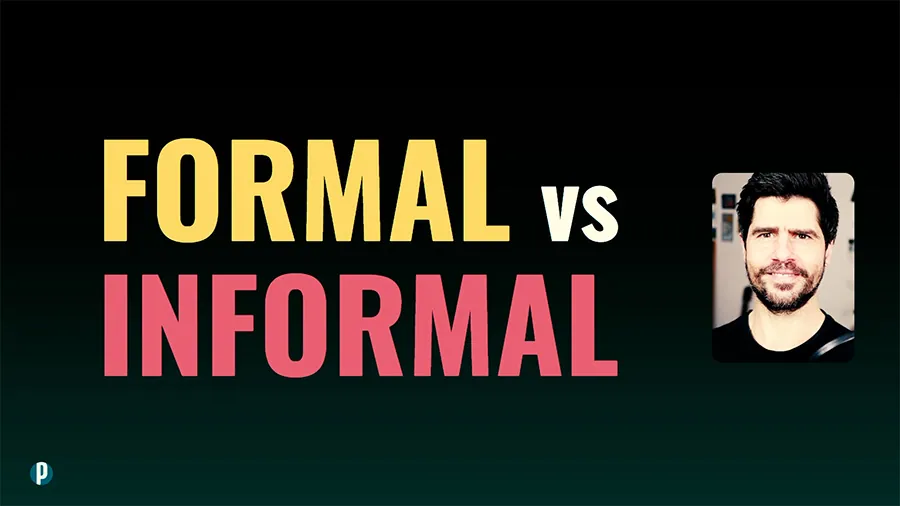
Beyond Olá: Learn Essential Portuguese Greetings for Every Situation
You are learning Portuguese because you want to be able to interact with people in this language, right? Well, there is no better way to spark a conversation than with a confident “Hi!”
There’s a wide variety of greetings: from formal, through casual, to vernacular expressions, and, within each of these categories, there are different alternatives. You always want to pick the salutation that best suits the context.
In a nutshell, here are a few options to say “Hi!” in Portuguese:
| Hi! | Olá! Viva! Oi! |
| How are you? | Tudo bem? (informal) Como estás? (informal) Como está? (formal) |
| According to the time of the day (formal) | Bom dia Good morning Boa tarde Good afternoon Boa noite Good evening/night |
There’s much more to it. Read on.
! Most of the greetings listed below apply to any Portuguese-speaking country. However, each country has its own colloquialisms and some of the expressions that will follow, especially those more vernacular, may concern Portugal specifically.
Hi!
The following greetings are all-rounders and can be used in almost any context.
Olá!
This is by far the most common greeting in Portuguese. You’ll hear it all the time, and you’ll probably say it quite often too.
Maybe you’re familiar with its Spanish cousin Hola! Mind, nonetheless, that their pronunciation differs. Compared to Hola!, the Portuguese Olá! is pronounced with a darker l sound and with a closed o-vowel sound.
Viva!
Viva! Another all-rounder that literally means “live!”
It is not as commonplace as Olá! but you’ll still hear it often. Also, it might sound slightly more refined than Olá!
Alternating between equivalent expressions is always a good idea for those learning and exploring a new language. So, don’t forget to say, Viva! now and again.
Oi!
This greeting is definitely not as common in Portugal as it is in Brazil. It is a very laid-back salutation and it will always have a Brazilian flavor.
In Brazil, it even means “What?” or “Can you say it again?” when you pronounce it with a rising intonation: Oi? But that won’t work in Portugal – you’d say O quê? instead.
Learn more about the differences between these two standards of Portuguese: European vs. Brazilian Portuguese – How Different Are They Really?
How are you?
In Portuguese, there are many different alternatives to greet “How are you?” just as there are in English. Importantly, you want to pick a greeting that matches the social setting.
Let’s look at a few common ways to say “How are you?”
Tudo bem?
Tudo bem? You’ll hear this a lot. It literally means “Is everything alright?” It is a versatile greeting that you can use in both formal and casual contexts. Often, people add the verb Estar (to be) to it: Está tudo bem?
Pay attention to its pronunciation. That final -m in bem produces a nasal sound. In fact, in Portuguese, all words ending with the letter -m will render that same nasal sound.
Passou bem?
This one is quite formal and you’d normally say it while shaking hands with someone – it feels as conventional as greeting “How do you do?”
Como está(s)?
Como estás? sounds casual and is, indeed, one of the most common Portuguese greetings.
Notice that estás is the 2-person of the verb Estar. That means you use Como estás? when talking to friends and people that you know well.
In a more formal setting, however, you may want to greet Como está? instead. The difference is that you are now using the 3-person of Estar. For instance, you’d Como está? to greet the person at the till while paying for your groceries.
Never fear though! The world won’t come to an end just because you happen to address a “stranger” using the 2-person – people will notice that you’re a gringo learning Portuguese and, in that case, the protocol won’t count.
Learn more about verbs and other basic grammar features of Portuguese: Dabbling in Portuguese Grammar – First Impressions for Beginners.
Como anda(s)?
This expression has the same feel as the previous one. The difference is that it uses the verb Andar (to walk) instead of Estar. Like before, you can adjust it to the situation: drop the s at the end and say instead Como anda? whenever you need to sound more formal.
Como vai(s)?
Possibly less common, this expression can be used interchangeably with the previous two. The word vais is the 2-person ofIr (to go). Again, use the 3-person if the situation so requires: Como vai?
Está(s) bom?
This one brings us back to the verb Estar. It corresponds more or less to “Is everything well?“ and it is also very common. Use it in both formal and casual situations – all you need to do is, as before, tweak the verb conjugation between the 2- and 3-person.
By the way, have you noticed the pattern? When it comes to verb conjugation, the difference between 2- and 3-person lies in that little s – the 2-person ends with an s, whereas the 3-person drops it.
Phonetically, the difference is also apparent. You’ll hear a hushing sound whenever someone uses any of the previous greetings in the 2-person.
Check out my online course Portuguese Sounds to dive deeper into the Portuguese sound system.
Então?
This word is not a salutation in itself – it is more of a filler word often used to initiate salutations and other utterances (as so in English: So, what’s up?). You will often hear it in association with the expressions above:
- Então, como vais?
- Então, tudo bem?
- Então, como anda?
- Então, estás bom?
- …
Greetings according to the time of the day
Greeting someone according to the time of the day sounds more formal than just saying Olá!
These Portuguese time-stamped greetings are used not only as a salutation but also to say farewell.
Bom dia
Bom dia is our “Good morning”. Normally, we say it from sunrise up until 12 a.m.
Also, you’d say Bom dia when to say goodbye to people, as in “Have a good day”.
Boa tarde
This is how we greet “Good afternoon” in Portuguese. You’d use it from 12 a.m. until … Well, many will use it until 6 p.m. or 7 p.m. Personally, I greet Boa tarde as long as it is bright outside – it then varies whether it’s summer or wintertime.
Again, Boa tarde is also used to take your leave, as in “Have a good afternoon”.
Boa noite
In Portuguese, Boa noite covers both for “Good evening” and “Good night”.
It is then the context nuancing Boa noite’s meaning. If you run into someone around 6 p.m. and if it is dark, you might greet Boa noite. If you are putting your child to bed, you also say Boa noite to her.
Combining different greetings
Now that we’ve learned a few basic Portuguese greetings, let’s mix them up to create even more possibilities.
In practice, this is actually what Portuguese native speakers do, and there are endless variations. Here are a few examples:
- Olá, tudo bem? (neutral)
- Então, como andas? Está tudo bem? (informal)
- Viva, estás bom? (informal)
- Viva, como vai? (formal)
- Então, passou bem? (formal)
- Boa tarde! então, como anda? (formal)
- . . .
Slang
These are the kinds of greetings that normally wouldn’t be shown in Portuguese textbooks. They are mostly used among the youth and they may sound unpolite in the eyes of many.
Word abbreviation is commonplace in this kind of register. In the examples below, you have tão instead of então, and tá(s) instead of está(s).
Also, you often get to hear words such as pá and fixe, which more or less mean “dude” and “cool” respectively.
Go ahead and use one of the following expressions if you want to make your Portuguese friends laugh, as they probably wouldn’t expect to hear it from you.
- Tão? (what’s up?)
- E quê (what’s up?)
- Tás bom pá? (you good?)
- Como é pá? tá tudo? (what’s up, dude? you good?)
- Tás fixe pá? (you cool?)
- Tão? tá tudo? (what’s up? you good)
- . . .
Reading tips! Speaking of the rougher side. Here’s a read for you in case you want to take a dive into Portuguese strong language: Portuguese Swear Words: An Unashamed Journey through Portuguese Strong Language.

Olá! I'm Pedro and I'm your Portuguese teacher.
Ready to unlock the beauty of European Portuguese? Portuguesepedia is your key! This all-in-one platform provides a wealth of learning resources, from bite-sized video lessons to immersive idiomatic dips. Perfect your pronunciation and aural comprehension with listening drills and solidify your grammar with in-depth articles. Start your Portuguese journey today!
Share this article
Get my guide "Key Strategies to Learn Portuguese" for FREE.

